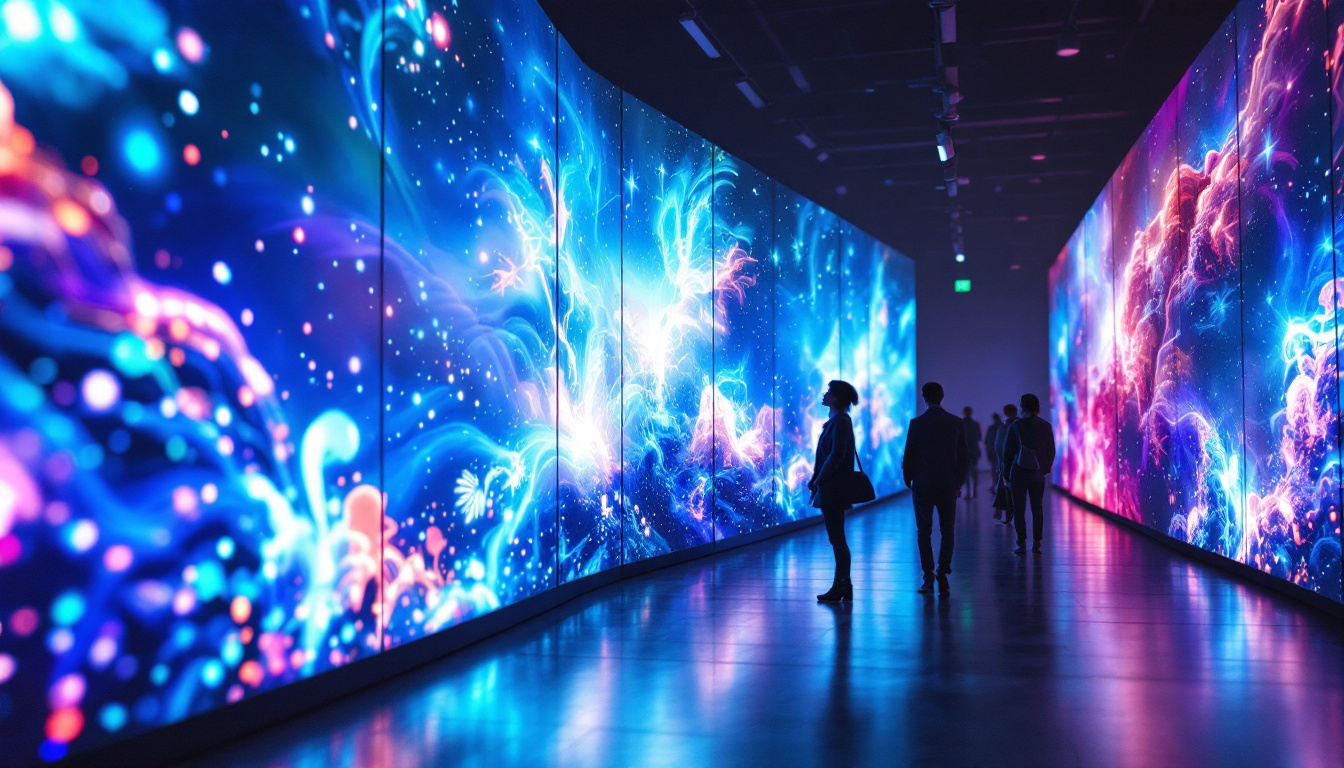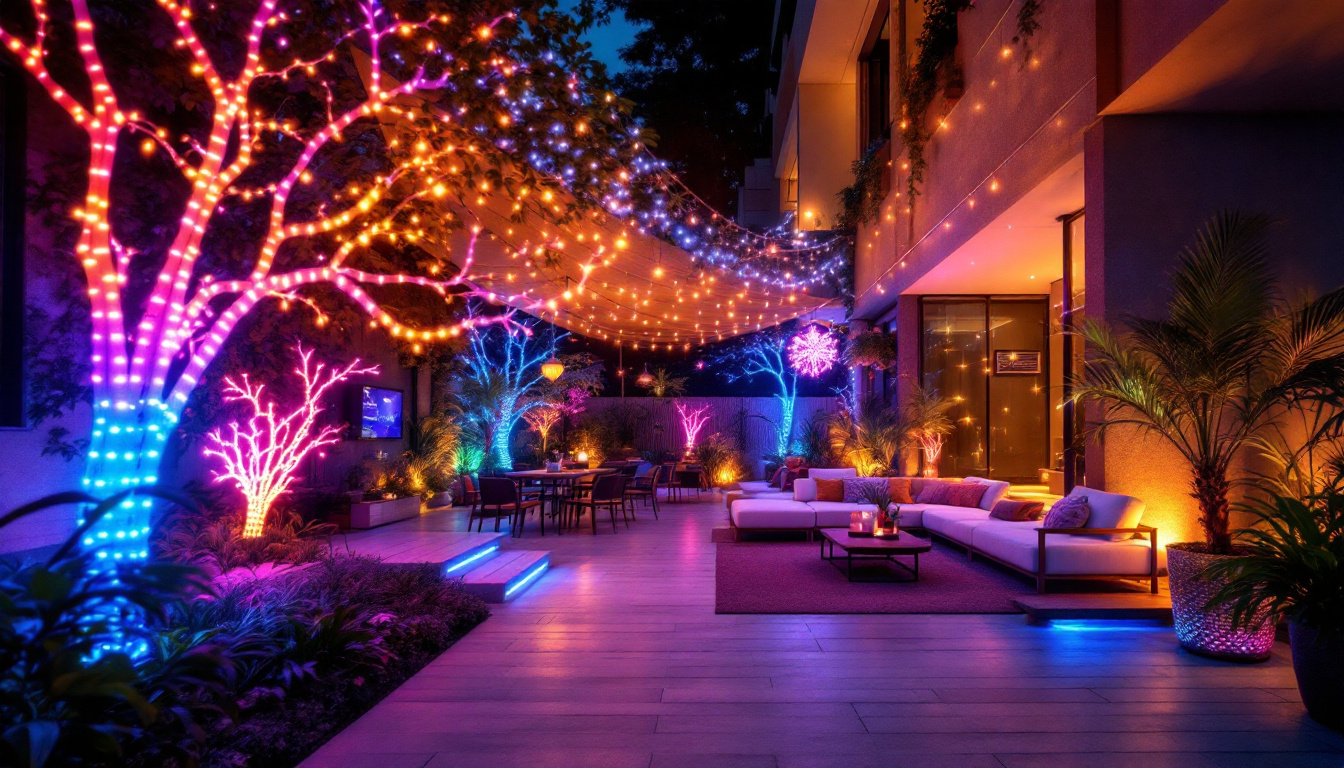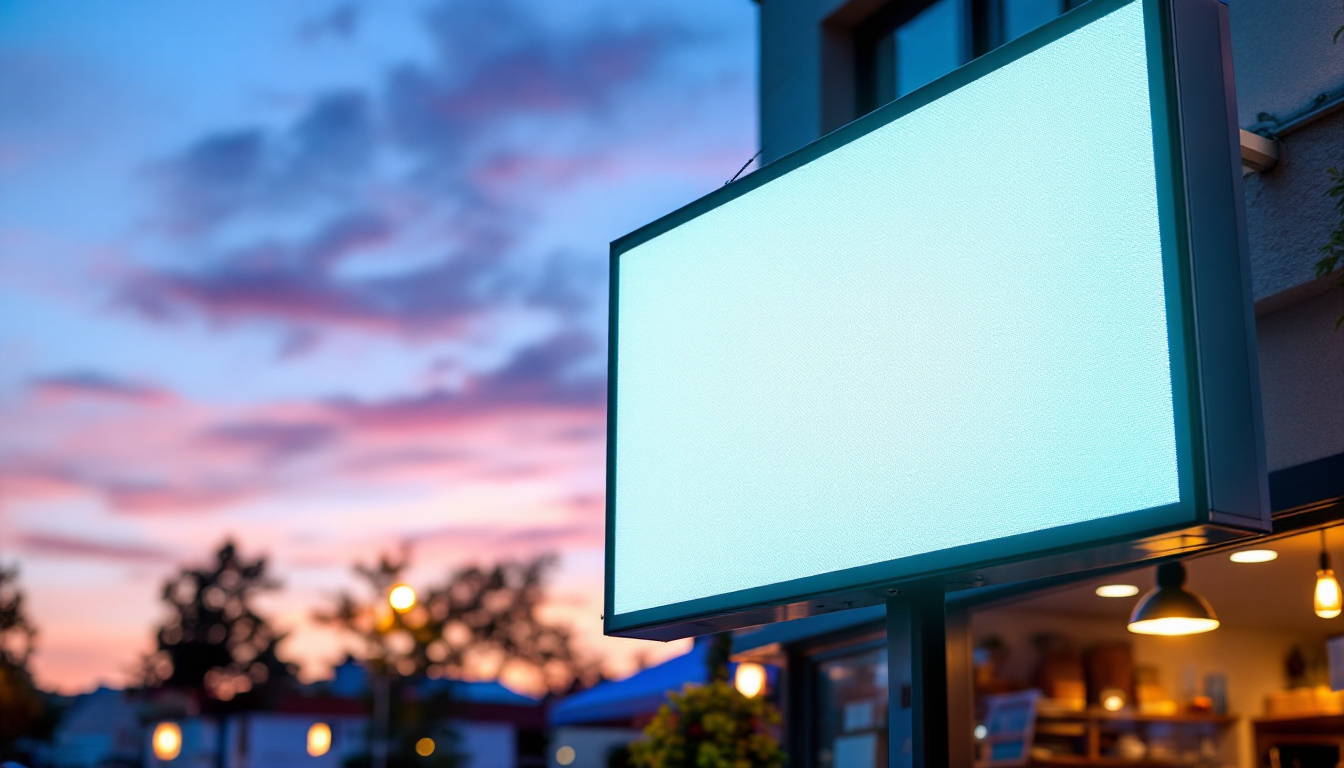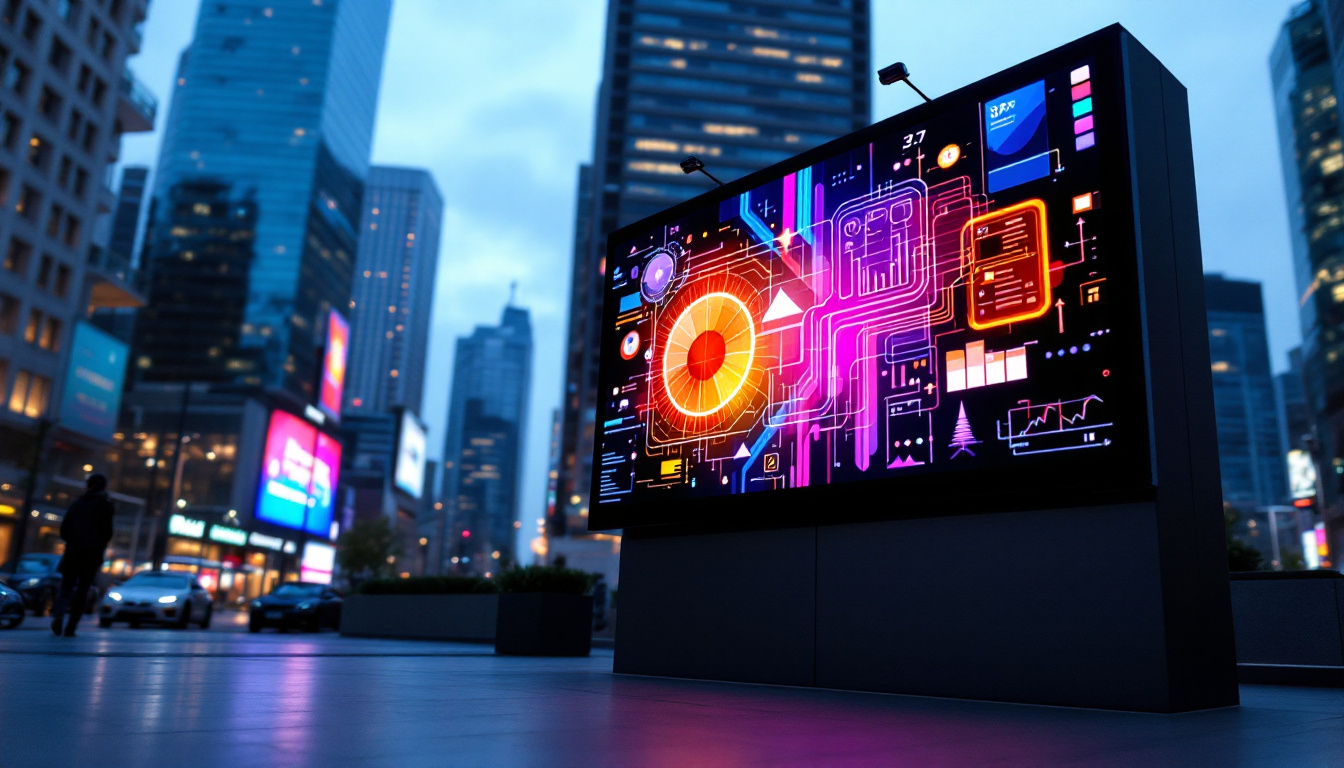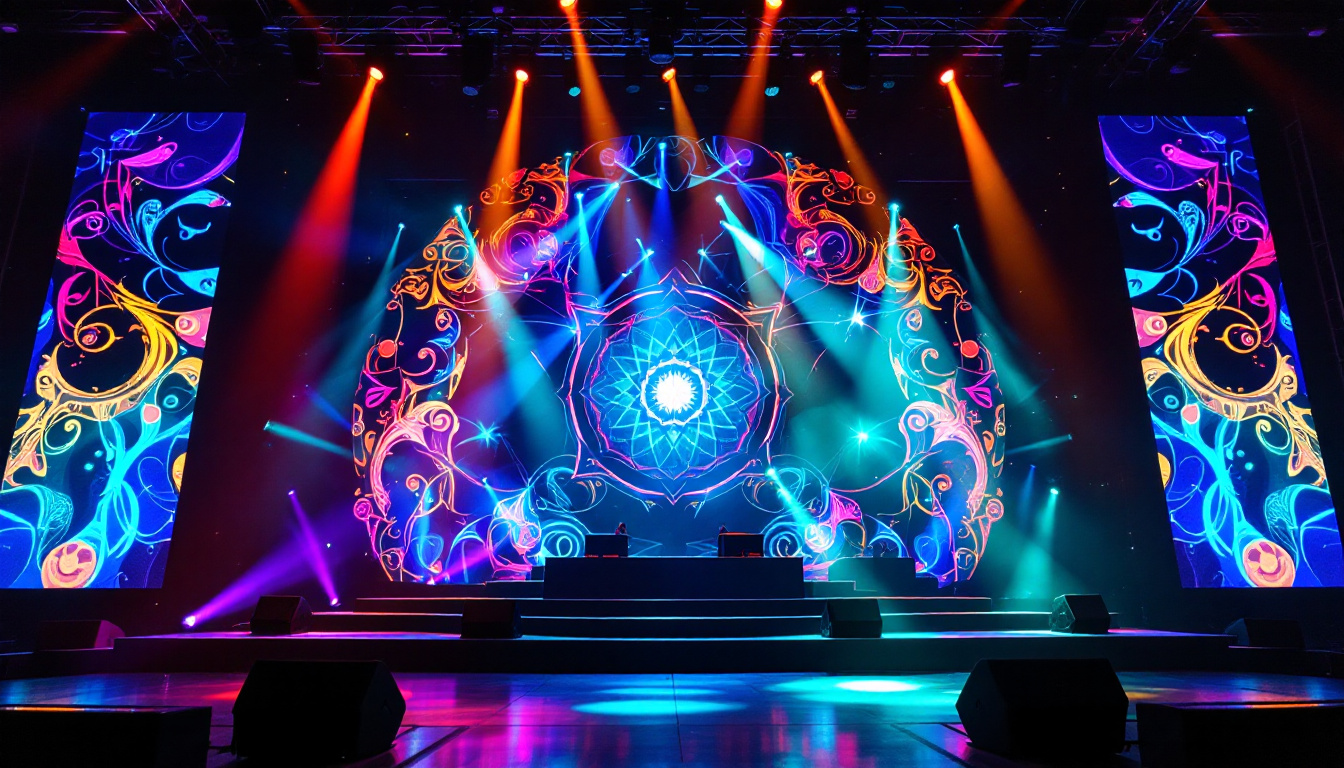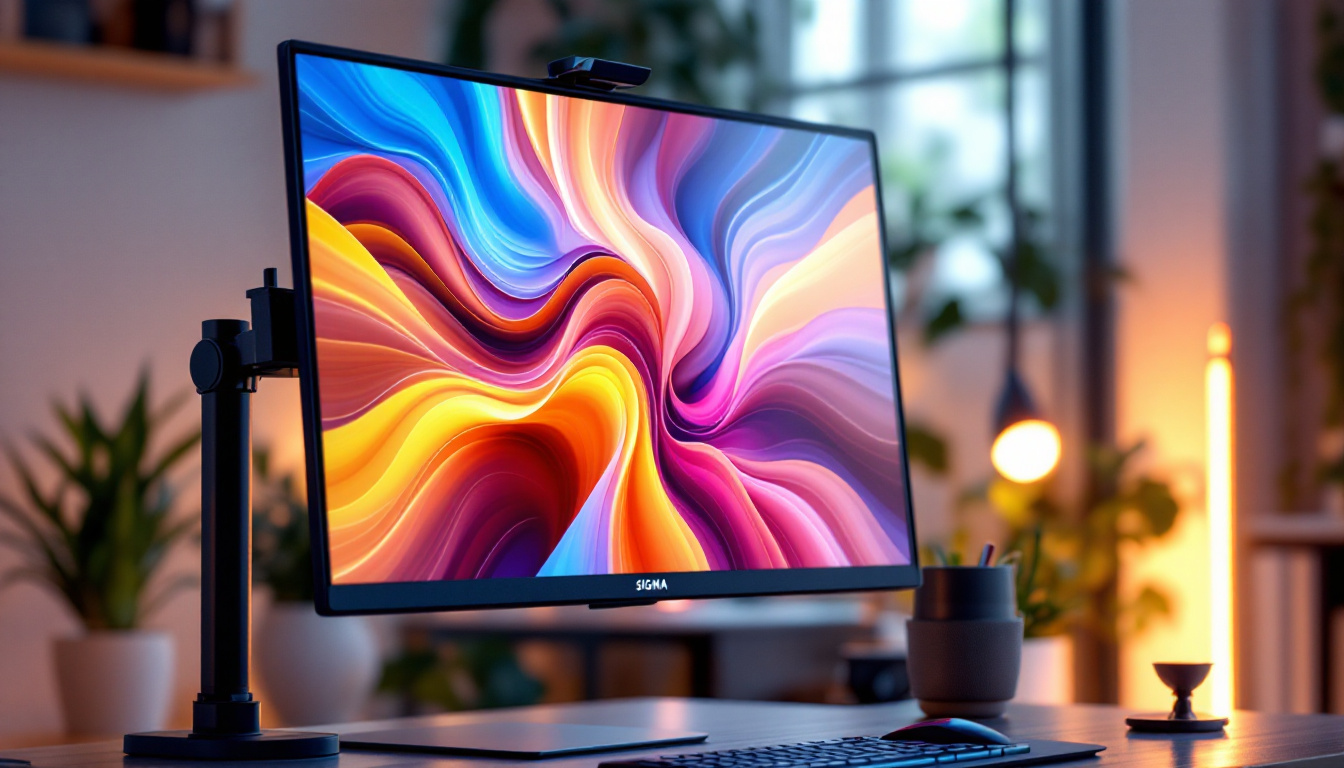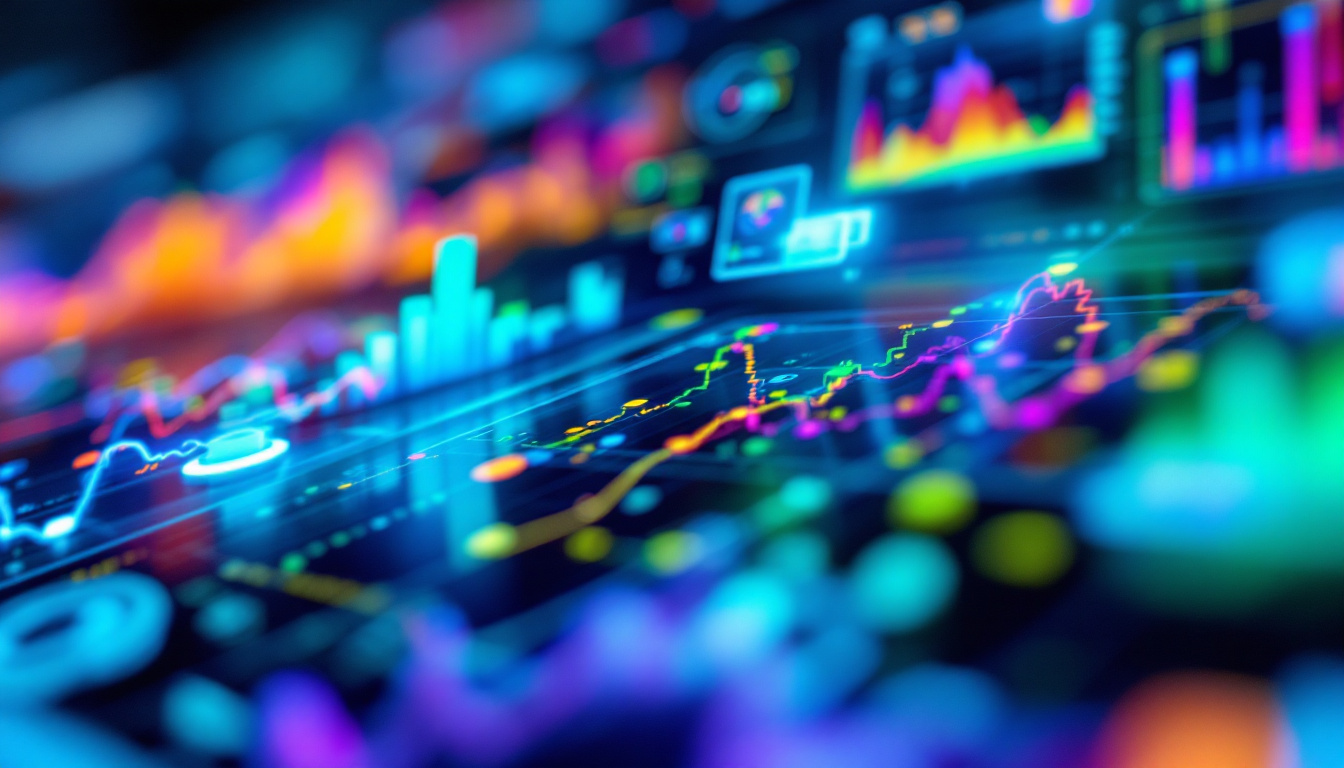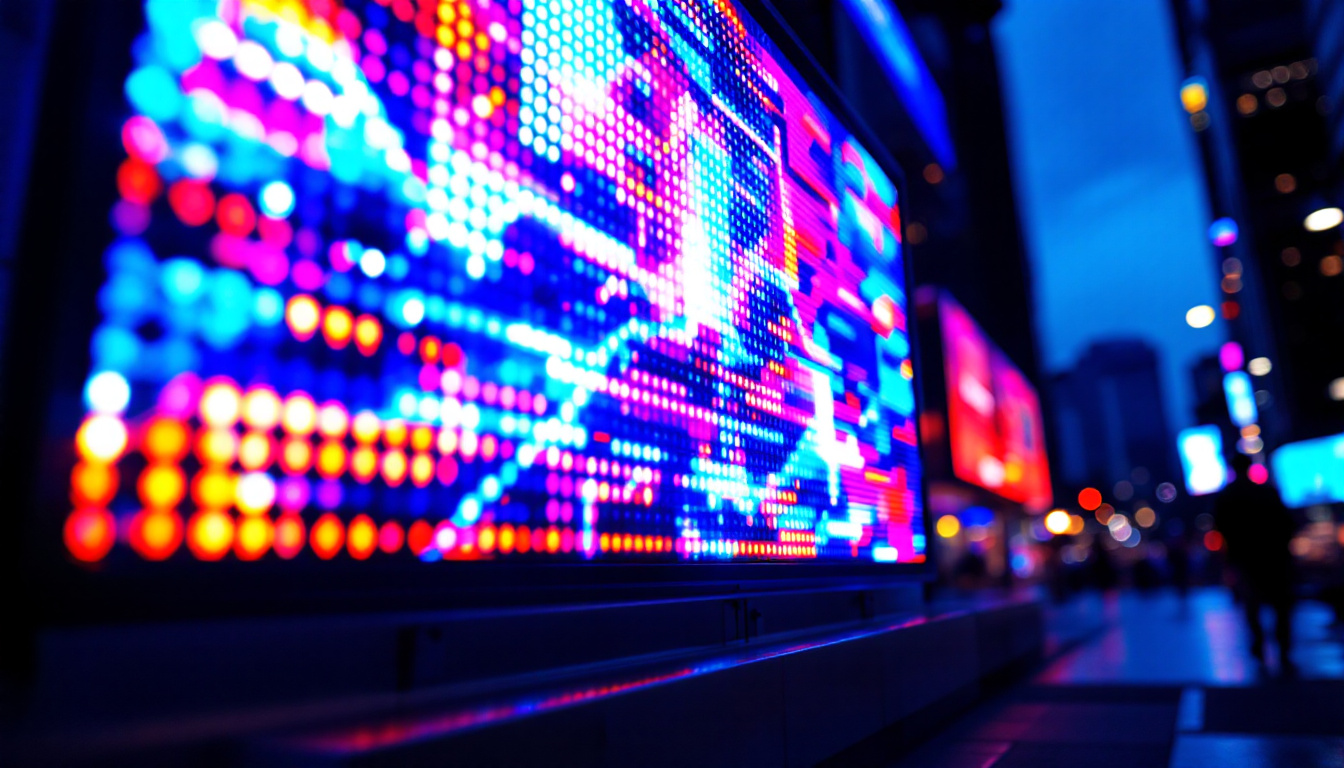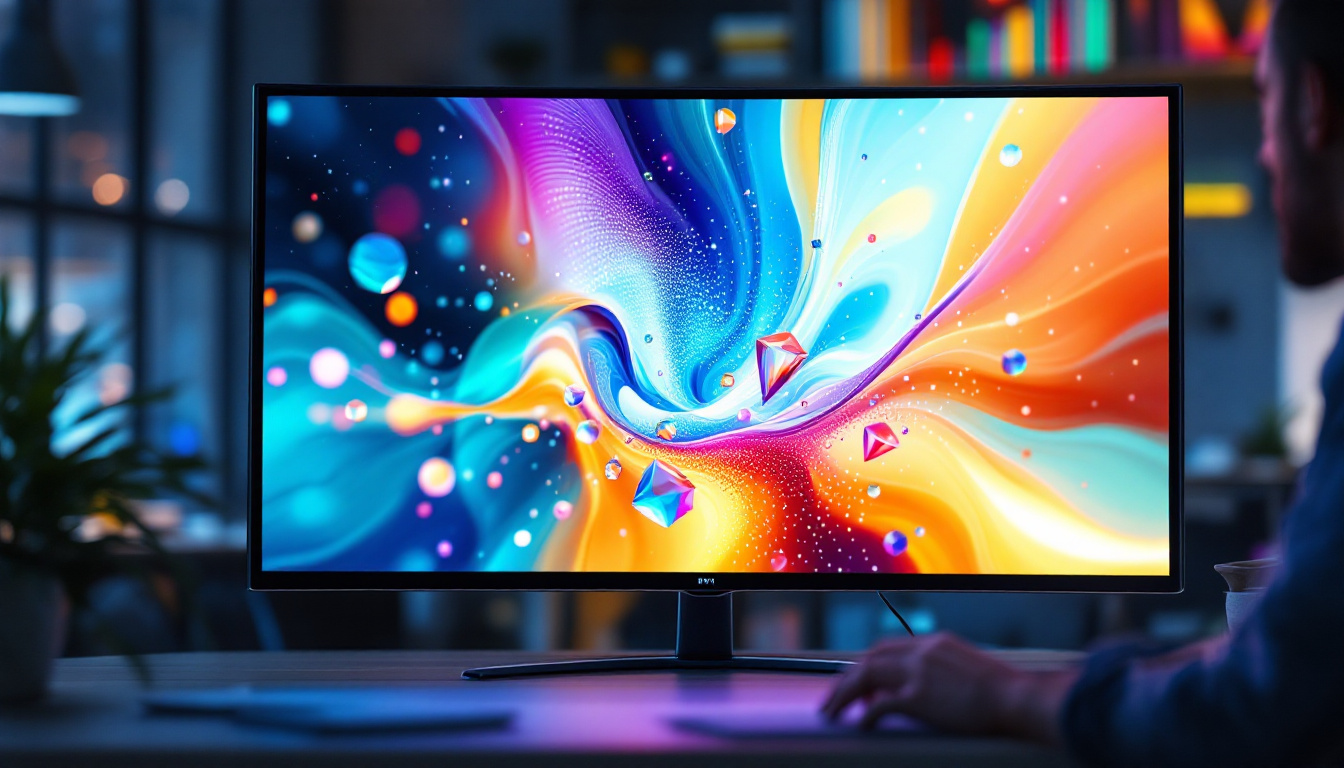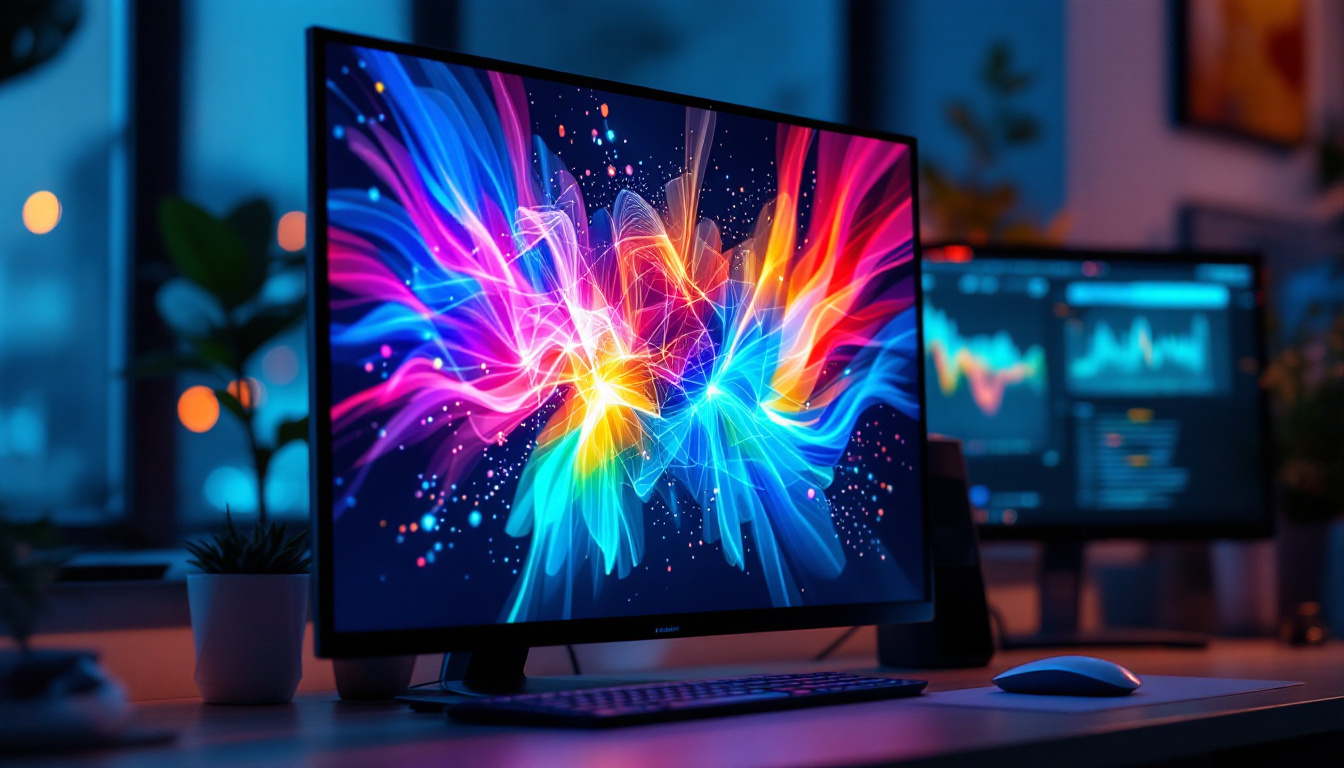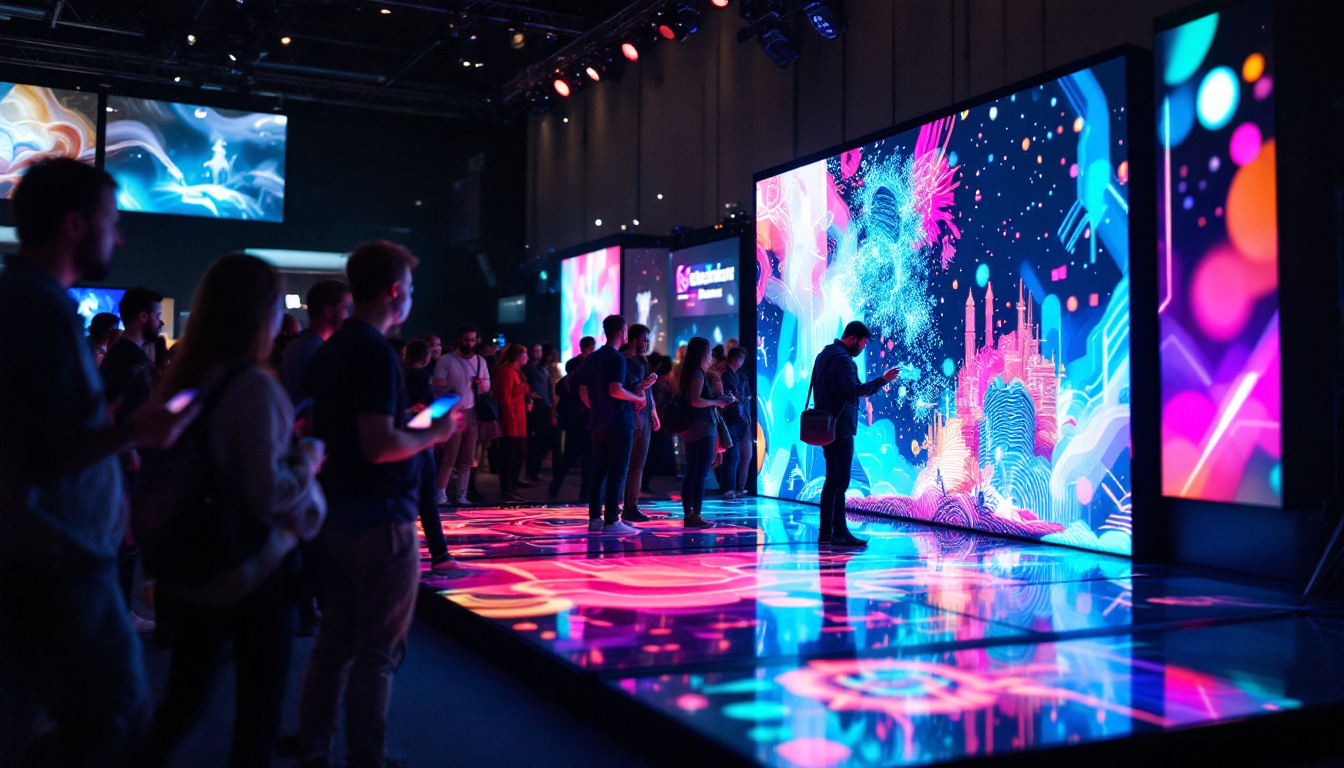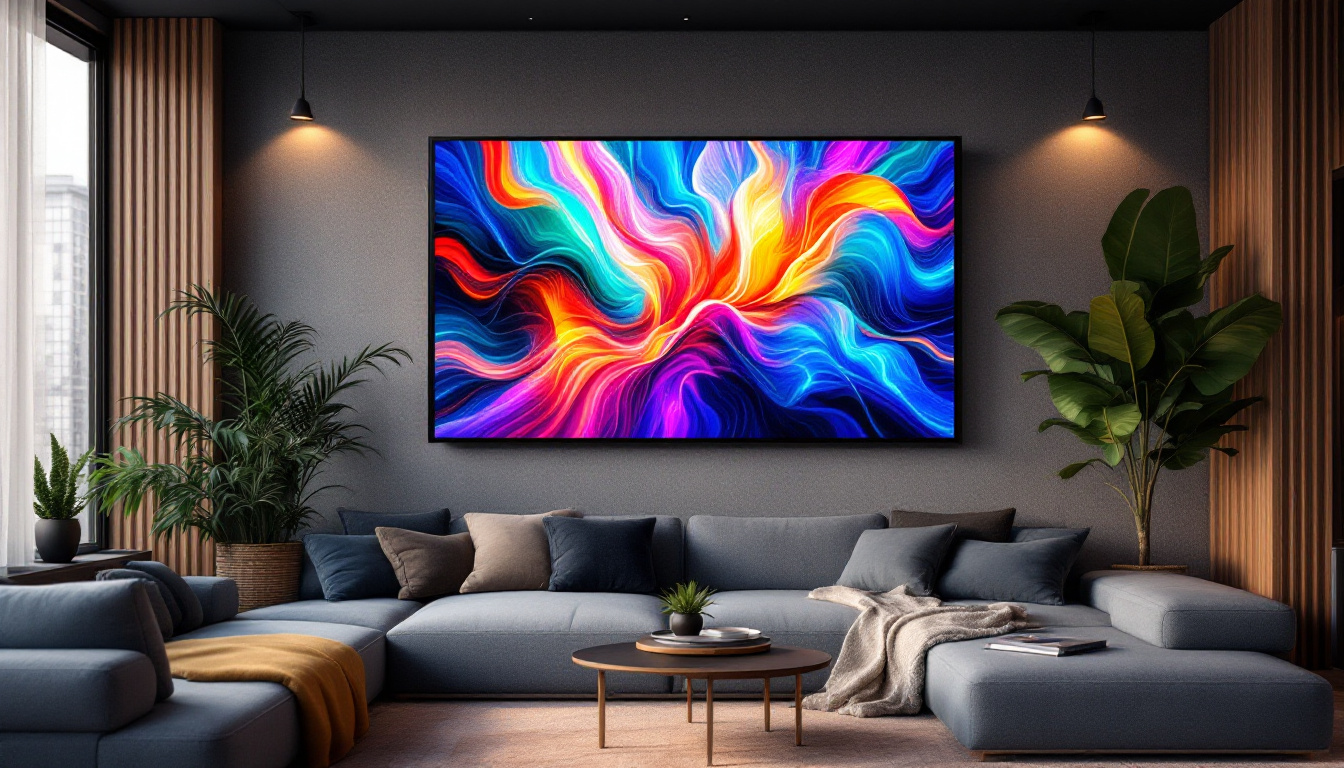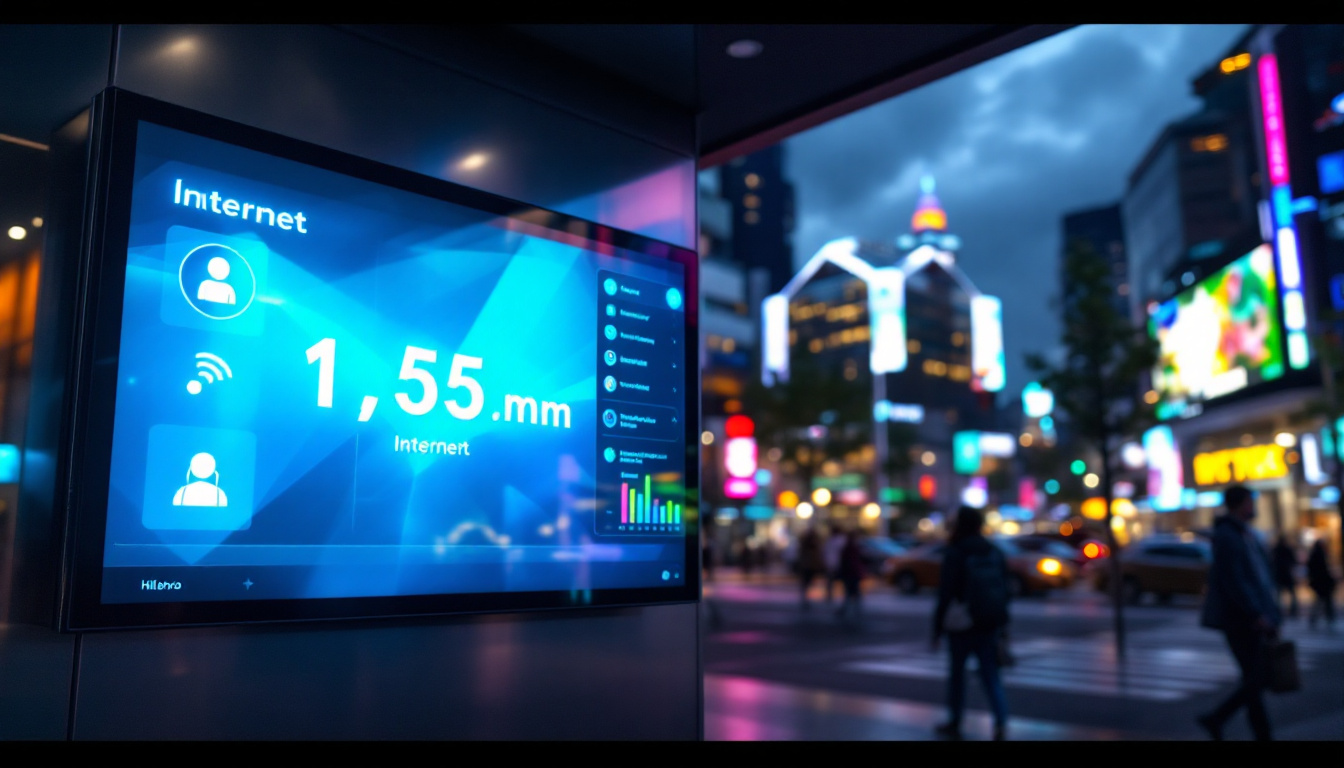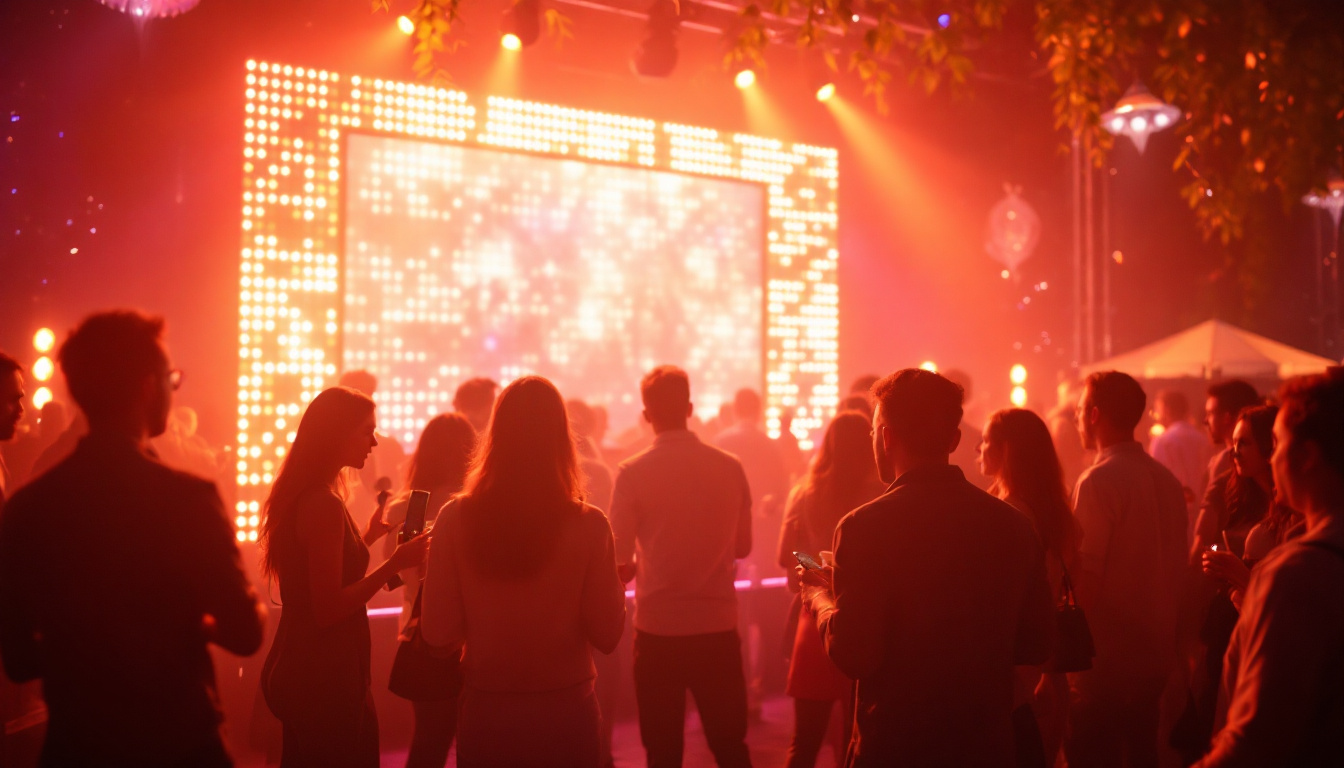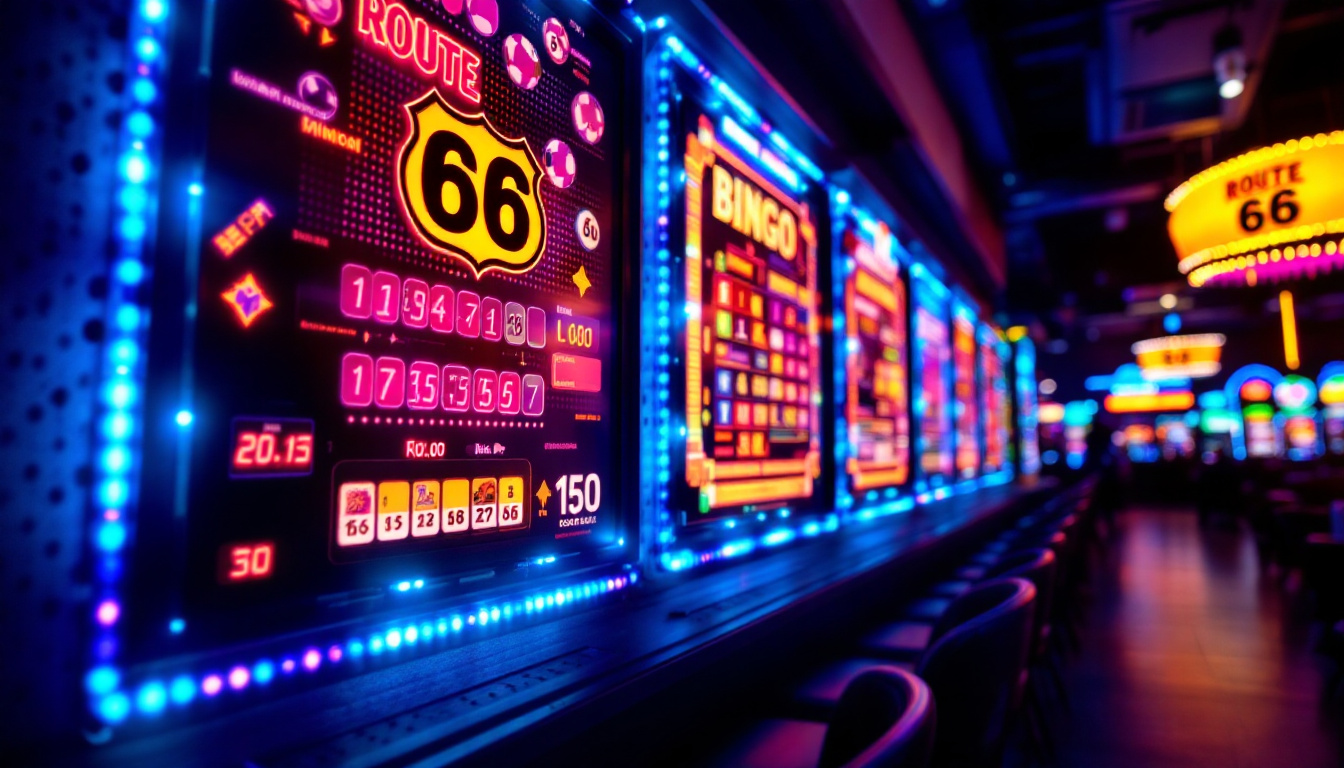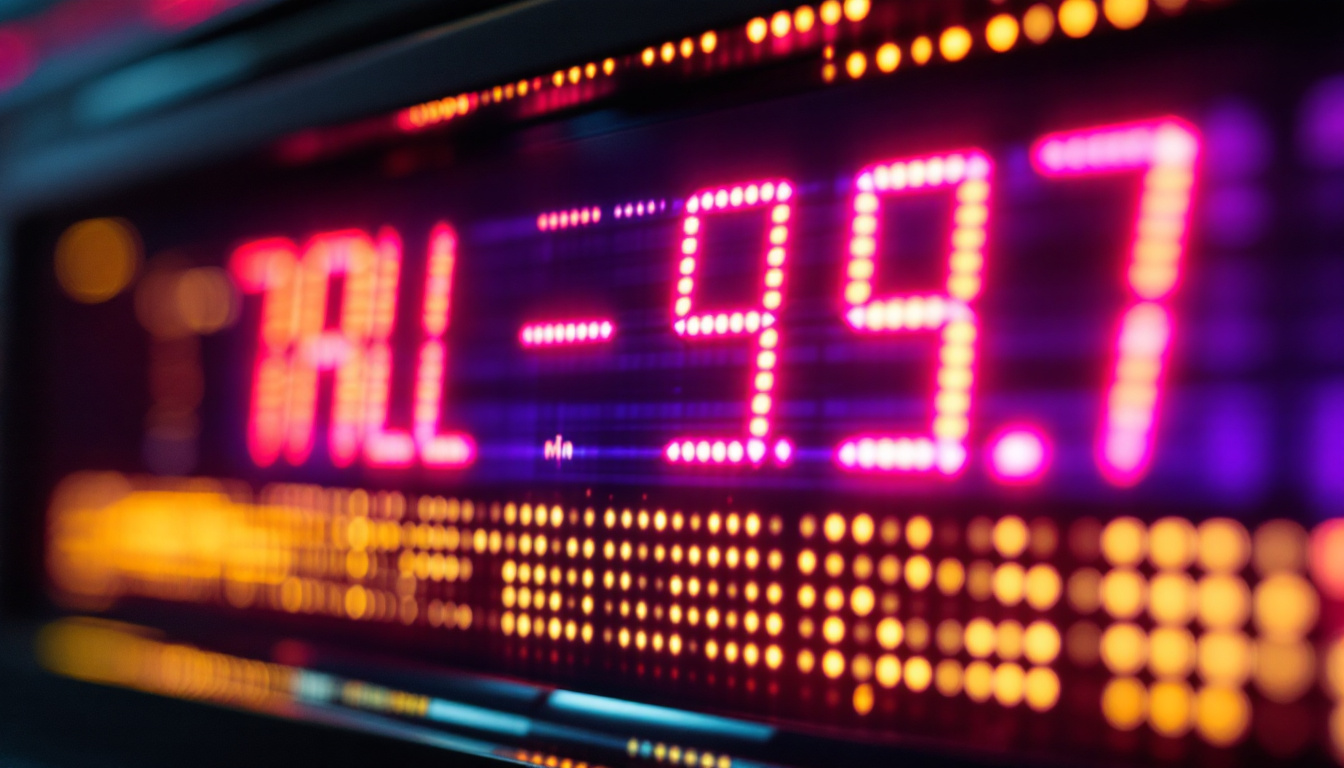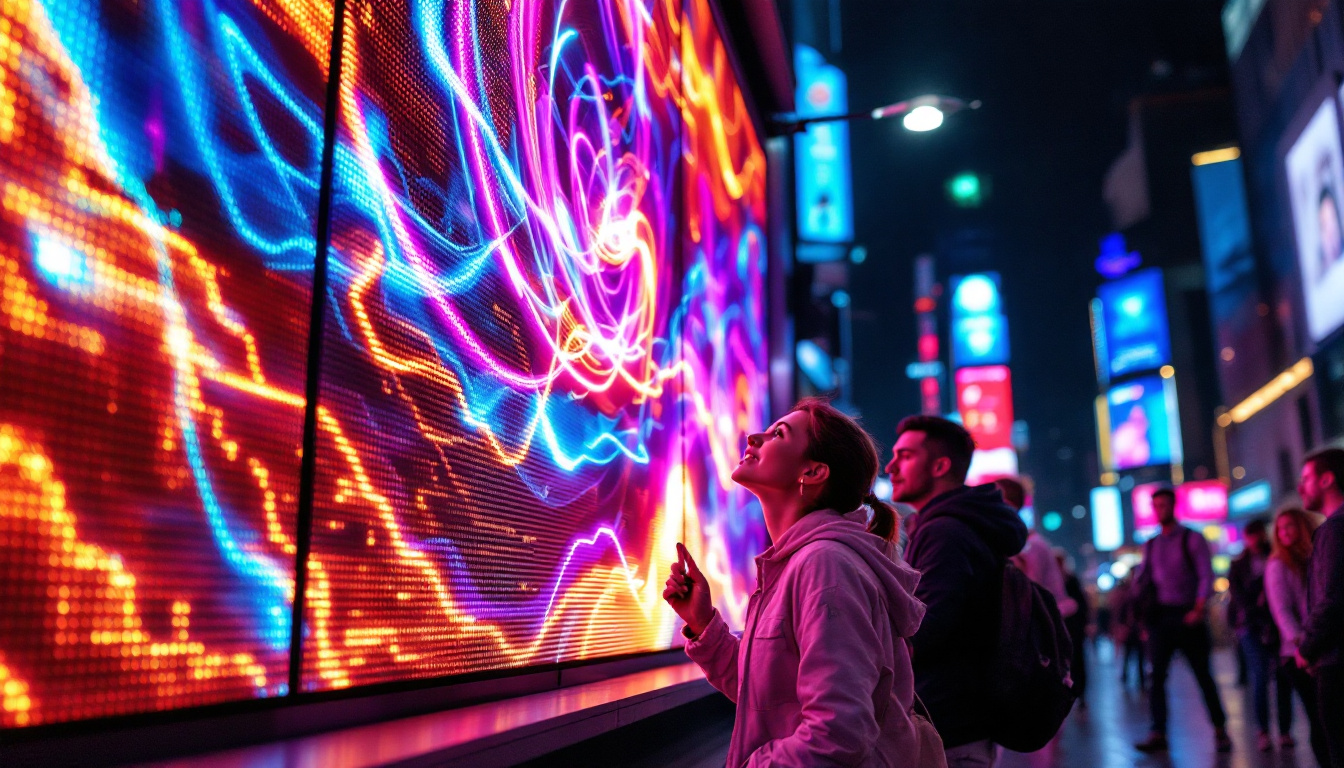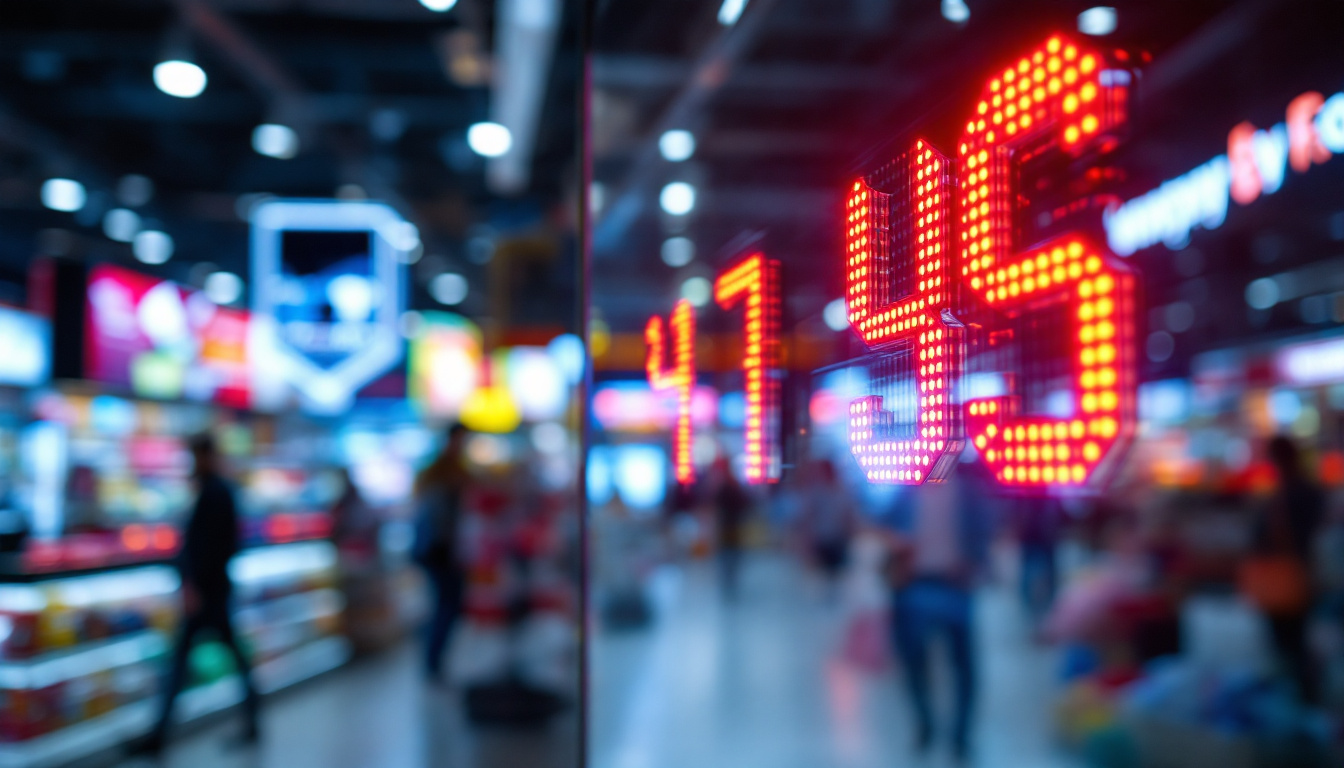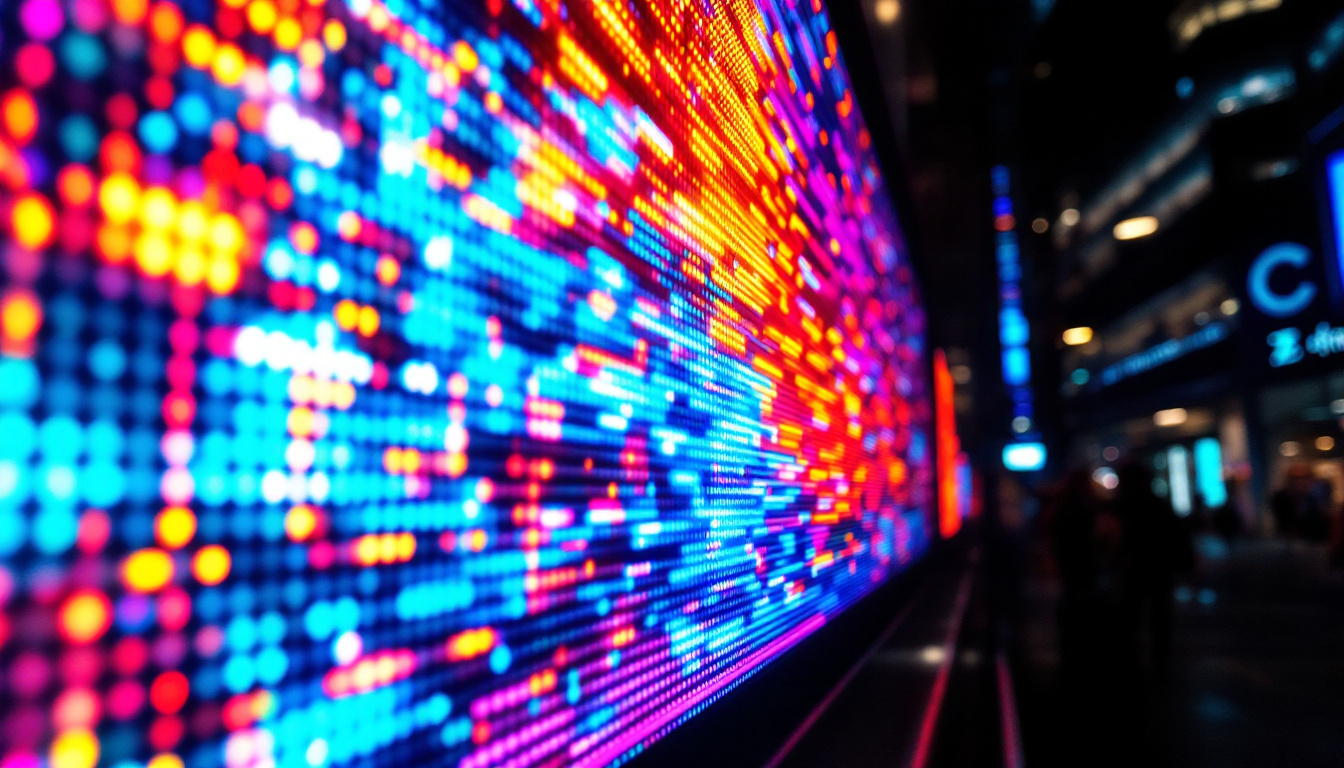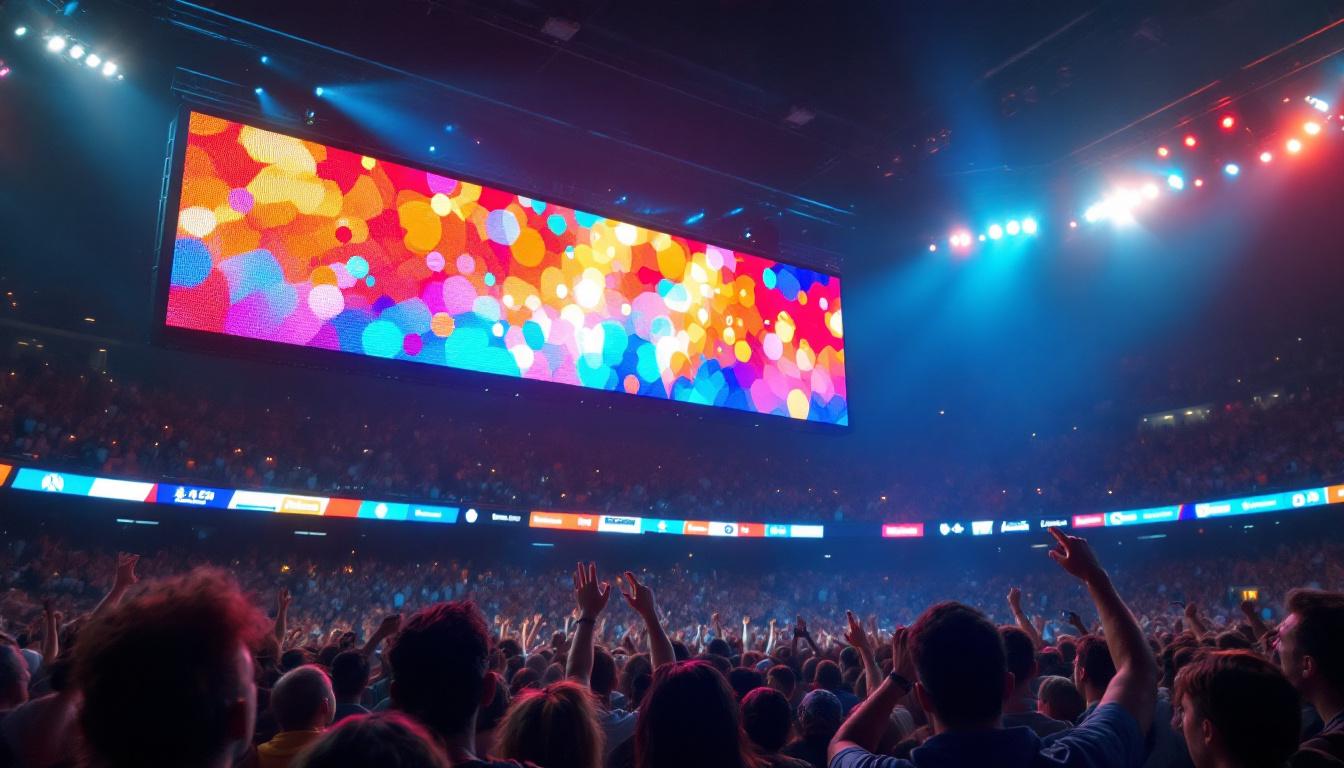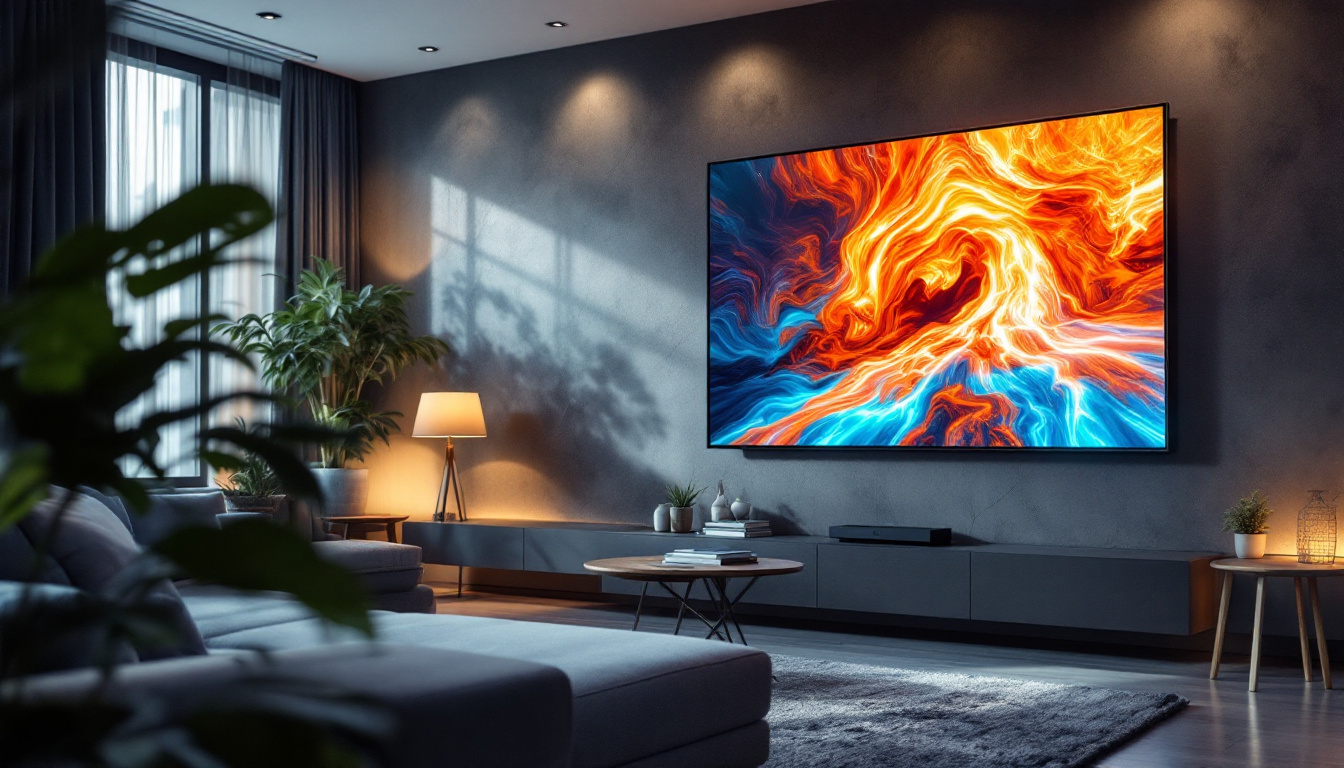In today’s fast-paced world, visual communication has become increasingly important. The rise of digital technology has transformed the way art and information are displayed, leading to the widespread adoption of LED displays. This article delves into the intricacies of LED displays, exploring their features, benefits, and applications in various settings.
Understanding LED Displays
LED displays utilize light-emitting diodes (LEDs) to produce images and videos. These displays can range from small screens used in smartphones to massive video walls seen in stadiums and public squares. The technology behind LED displays has evolved significantly, making them a popular choice for both commercial and artistic applications.
The Basics of LED Technology
At the core of LED displays are the light-emitting diodes, which are semiconductor devices that emit light when an electric current passes through them. This technology allows for vibrant colors and high brightness levels, making LED displays ideal for both indoor and outdoor use.
LED displays can be categorized into two main types: direct view and backlit. Direct view displays consist of individual LED modules that create the image directly, while backlit displays use LEDs to illuminate a liquid crystal display (LCD) panel. Each type has its own advantages and is suited for different applications. For instance, direct view displays are often favored for their superior color accuracy and contrast ratios, making them perfect for environments where visual impact is paramount, such as art installations and advertising displays.
Key Features of LED Displays
LED displays come with a host of features that enhance their functionality and appeal. One of the most notable features is their ability to produce high-resolution images. With advancements in technology, LED displays can now achieve pixel pitches as small as 1mm, resulting in stunning clarity and detail.
Another significant feature is their energy efficiency. LED displays consume less power compared to traditional display technologies, making them a more sustainable option. Additionally, they have a longer lifespan, often lasting up to 100,000 hours, which reduces the need for frequent replacements. This longevity not only contributes to lower maintenance costs but also minimizes the environmental impact associated with electronic waste. Furthermore, many LED displays are designed to be modular, allowing for easy upgrades and repairs, which is particularly advantageous for large installations that require flexibility and scalability.
Moreover, the versatility of LED displays extends beyond mere visual appeal. They can be integrated with smart technology, enabling features such as remote monitoring and content management. This capability allows businesses to update their displays in real-time, tailoring messages to specific audiences or events. In addition, advancements in interactive LED technology are paving the way for engaging experiences, where viewers can interact with the display through touch or motion sensors, making them an exciting choice for exhibitions and trade shows.
Benefits of Using LED Displays
The benefits of LED displays extend beyond their technical specifications. They offer a range of advantages that make them an attractive choice for businesses and artists alike.
Enhanced Visibility and Engagement
One of the most compelling benefits of LED displays is their visibility. With high brightness levels, they can be easily seen in various lighting conditions, including direct sunlight. This makes them ideal for outdoor advertising and public displays, where capturing attention is crucial.
Moreover, LED displays can convey dynamic content, such as videos and animations, which enhances viewer engagement. This capability allows businesses to communicate messages more effectively, making it easier to attract and retain customers. The ability to change content quickly also means that businesses can respond to trends or events in real-time, ensuring that their messaging is always relevant and timely. For instance, a restaurant can update its menu specials or a retail store can promote flash sales instantly, maximizing their advertising impact.
Versatility in Applications
LED displays are incredibly versatile and can be used in a wide range of applications. From retail environments showcasing promotions to art installations that create immersive experiences, the possibilities are endless. They are also commonly used in sports arenas for scoreboards and in concert venues for visual effects.
This versatility extends to the size and shape of LED displays. They can be customized to fit any space, whether it’s a large outdoor billboard or a small indoor screen. This adaptability makes them suitable for various industries, including retail, entertainment, education, and more. Additionally, LED technology has evolved to include flexible displays that can be curved or shaped to fit unique architectural designs, further expanding their application. For example, museums can use these displays to create engaging exhibits that wrap around visitors, while corporate offices might utilize them for sleek, modern presentations that enhance their branding.
Furthermore, the energy efficiency of LED displays contributes to their appeal. Compared to traditional display technologies, LEDs consume significantly less power, which not only reduces operational costs but also aligns with sustainability goals. Businesses looking to minimize their carbon footprint can benefit from this aspect, as LED displays are often designed to last longer and require less frequent replacement, leading to less electronic waste. This makes them not only a smart financial investment but also a responsible choice for environmentally conscious organizations.
Applications of LED Displays
LED displays have found their way into numerous sectors, revolutionizing how information and art are presented. Their applications are vast, and they continue to evolve as technology advances.
Advertising and Marketing
In the realm of advertising, LED displays have become a staple. Their ability to display vibrant images and videos makes them highly effective for marketing campaigns. Businesses can showcase their products and services in an eye-catching manner, drawing in potential customers.
Digital billboards, for instance, can rotate multiple advertisements in a single location, maximizing exposure and engagement. This dynamic advertising approach allows companies to reach a broader audience and adapt their messaging in real-time based on market trends.
Art and Creative Installations
Artists and designers have embraced LED technology to create stunning visual installations. LED displays can transform spaces, allowing for interactive and immersive experiences. From art galleries to public installations, the integration of LED displays has opened new avenues for artistic expression.
These displays can be programmed to change colors, patterns, and images, enabling artists to craft dynamic pieces that evolve over time. This innovative approach not only captivates viewers but also challenges traditional notions of art and display.
Information and Wayfinding Systems
LED displays are also widely used in information dissemination. Airports, train stations, and shopping malls utilize LED screens to provide real-time information to travelers and visitors. This includes flight schedules, directions, and promotional content.
Wayfinding systems equipped with LED displays enhance the user experience by offering clear and concise information. This is particularly beneficial in large venues where navigation can be challenging. By providing timely updates and directions, LED displays contribute to a more efficient and enjoyable experience for users.
Challenges and Considerations
While LED displays offer numerous advantages, there are also challenges and considerations to keep in mind when implementing this technology.
Cost and Investment
The initial investment for LED displays can be significant, especially for high-resolution models. Businesses must weigh the costs against the potential return on investment. However, it’s essential to consider the long-term savings associated with energy efficiency and reduced maintenance costs.
Moreover, as technology continues to advance, prices for LED displays are gradually decreasing, making them more accessible for a wider range of applications. Organizations should conduct thorough research and analysis to determine the best options for their specific needs.
Maintenance and Upkeep
While LED displays are known for their durability, they still require regular maintenance to ensure optimal performance. Dust and debris can accumulate on the screens, affecting image quality. Regular cleaning and inspections are necessary to maintain clarity and functionality.
Additionally, as with any technology, there may be occasional malfunctions or failures. Having a reliable support system in place for repairs and troubleshooting is crucial to minimize downtime and maintain the display’s effectiveness.
Future Trends in LED Display Technology
The future of LED display technology is promising, with ongoing innovations poised to enhance their capabilities further. Several trends are emerging that are likely to shape the industry in the coming years.
Advancements in Resolution and Pixel Density
As consumer demand for high-quality visuals continues to grow, manufacturers are focusing on improving resolution and pixel density in LED displays. This trend is leading to the development of ultra-high-definition (UHD) displays, which deliver stunning clarity and detail.
With advancements in microLED technology, displays are becoming even more compact, allowing for higher pixel densities without sacrificing brightness or color accuracy. This evolution will enable more immersive viewing experiences across various applications.
Integration with Smart Technology
The integration of LED displays with smart technology is another trend gaining momentum. Smart LED displays can connect to the internet, allowing for real-time content updates and remote management. This capability enhances flexibility and responsiveness, making it easier for businesses to adapt their messaging based on audience engagement and analytics.
Furthermore, the incorporation of artificial intelligence (AI) into LED display systems can optimize content delivery by analyzing viewer behavior and preferences. This data-driven approach will enable more targeted and effective communication strategies.
Conclusion
LED displays have revolutionized the way information and art are presented, offering a dynamic and engaging medium for communication. Their versatility, energy efficiency, and ability to produce stunning visuals make them an indispensable tool in various industries.
As technology continues to advance, the future of LED displays looks bright. With ongoing innovations in resolution, smart technology integration, and creative applications, LED displays will undoubtedly play a pivotal role in shaping visual communication for years to come.
For businesses and artists looking to enhance their visual presence, investing in LED display technology is not just a trend—it’s a strategic move towards a more engaging and effective way to connect with audiences.
Discover LumenMatrix LED Display Solutions
Ready to elevate your visual experience with the latest in LED display technology? Look no further than LumenMatrix, a leader in innovative LED solutions. From mesmerizing Indoor and Outdoor LED Wall Displays to versatile Vehicle and Sports LED Displays, our range includes Floor LED Displays, Custom configurations, All-in-One solutions, and even LED Transparent Displays. Embrace the future of visual communication with LumenMatrix and create unforgettable, engaging displays that truly stand out. Check out LumenMatrix LED Display Solutions today and transform the way you connect with your audience.

